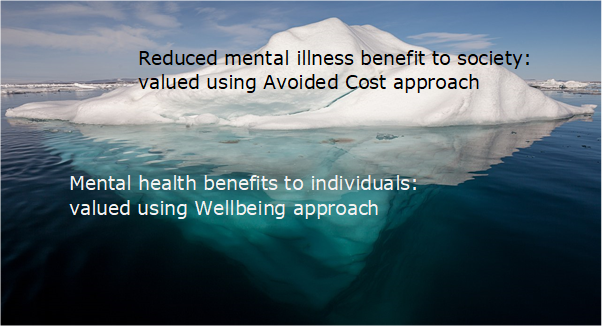Summary
This research aims to better understand different approaches used to value the mental health benefits of forests and proposes next steps for further development of their monetary valuation. The study examines metrics used to quantify mental health impacts, methodologies to value changes in these and potential for inclusion of monetary values of the mental health benefits of forests into natural capital accounting and in project and policy appraisals.
Research Objectives
- Review existing literature on valuing the mental health benefits of forests, focusing on methodologies that monetise these
- Highlight relevant impact pathways/logic chains which focus on monetary valuation of mental health benefits of forests and other greenspaces
- Identify metrics used to quantify and monetise mental health benefits of forests and list their pros and cons
- Interview key stakeholders and experts on their perspectives on the best approaches
- Develop proposals, including methodologies, for how to monetise mental health benefits of forests and the potential for the incorporation of these values in natural capital accounting and in project and policy appraisal

Findings and Recommendations
The first step in valuing mental health benefits of forests is to quantify the mental health impact using a metric such as a self-reported mental health scale, or a directly observable characteristic (e.g. a biomarker such as cortisol level) or change associated with a mental health intervention (e.g. in anti-depressant prescription rates), compared to an appropriate baseline. (This could either be a standardised baseline, or be based on a pre-intervention survey). The second step is monetising this change. We identified three major ‘direct’ methodologies applicable to mental health valuation:
1. QALY (Quality Adjusted Life Years):
a. Useful for comparing healthcare interventions, but less sensitive to detecting changes in mental health than in physical health.
2. Wellbeing Valuation:
a. Life Satisfaction Scores: Changes can be directly monetised utilising a causal model of income as a determinant of life satisfaction, but life satisfaction is a broad measure of wellbeing encompassing wider benefits apart from mental health.
b. Short-Warwick Edinburgh Mental Wellbeing Scores (SWEMWBS): Changes can be monetised using a simple model relating SWEMWBS to life satisfaction, although the current model’s simplicity lends it more towards evaluation of local interventions rather than natural capital accounting. Further work may be required to develop this pathway, but the metric itself is a robust measure of mental health.
3. Avoided Costs:
a. Mental illness drug (e.g. anti-depressant) prescriptions: This gives a very conservative estimate based on conceptualising mental health as a simple binary outcome.
b. General Practitioner (GP) Visits: It is challenging to disentangle visits associated with mental health conditions from other reasons for visiting a GP (unless NHS data can be used).
c. Costs of poor mental health (productivity losses): Productivity losses from poor mental health or mental illness are difficult to estimate. Quantifying underlying drivers by separating out sick leave due to mental health issues from that due to other factors is not always straight-forward.
d. Costs to the National Health Service: available data on NHS spending on mental health is often utilised using a crude transfer without establishing proper attribution of the woodland’s (or other greenspace’s) impact and causality.
e. Other cost metrics (e.g. costs of mental-health related court cases) could potentially be utilised if causality between woodland use or proximity and relevant mental health states can be established.
Opportunities for valuation:
A major distinction between the approaches is that avoided costs and QALY approaches value the benefits associated with reductions in mental illness, whereas a wellbeing approach is more comprehensive in valuing mental health benefits more widely – including those not associated with improving existing poor mental health. A wellbeing approach captures a greater proportion of the mental health benefits of forests to individuals by including the large proportion of the population that are mentally healthy, thereby also including benefits in relation to helping prevent development of mental illness. This method, however, is also more susceptible to double-counting issues with other ecosystem service values such as recreation. As it reflects the value of mental health benefits to the individual, whereas avoided cost approaches value reductions in mental illness in terms of a wider societal benefit such as cost savings to the National Health Service or avoided productivity losses of companies, these approaches can be viewed as complementary rather than substitutes.
The study provides a set of proposals for future research drawing upon each of the approaches. It is recommended that an avoided cost approach may be best suited to estimating additional mental health values that avoid double-counting issues.
Our Involvement
Forest Research led the project in collaboration with two independent experts (‘critical friends’) – a clinical practitioner and an environmental and public health economist.
Downloads
Funding & Partners
- Funded by the Welsh Government

